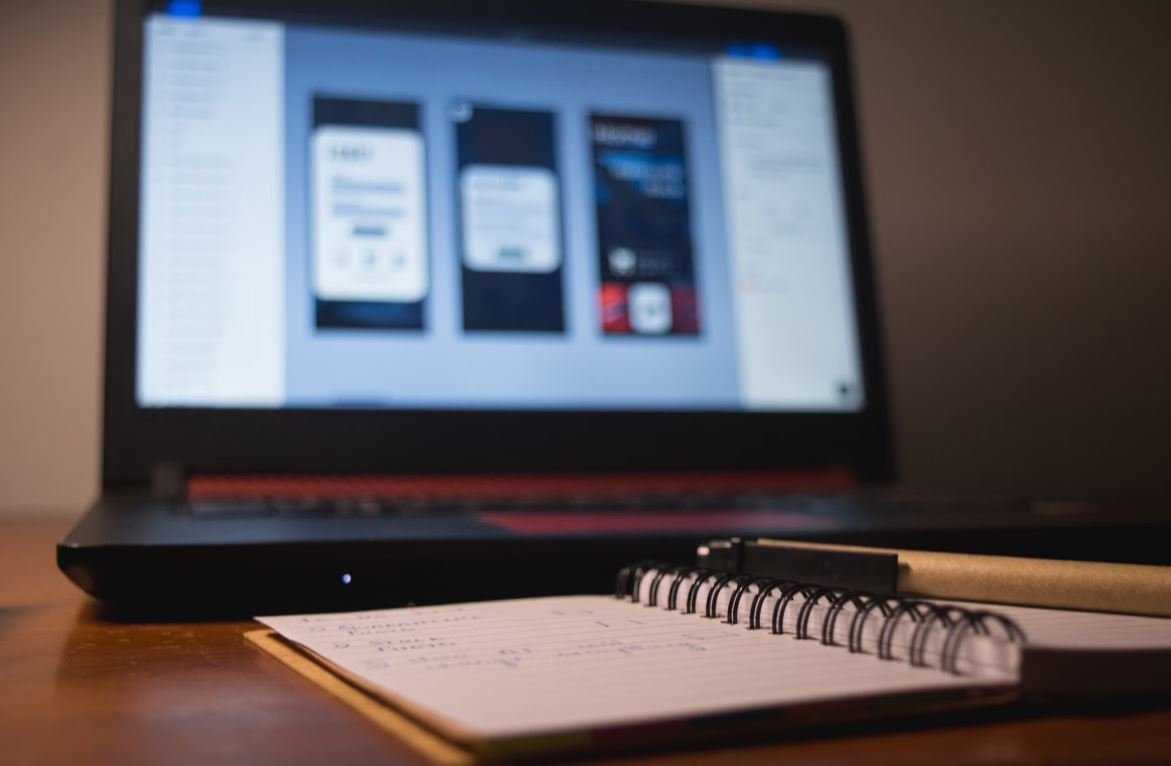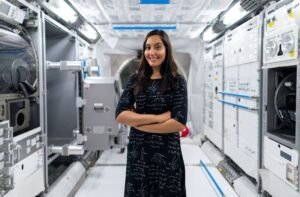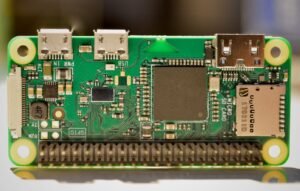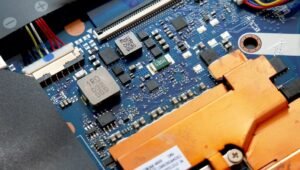AI Image in Vector
In the digital age, Artificial Intelligence (AI) has revolutionized various industries, including graphic design and image manipulation. One powerful aspect of AI in this field is its ability to convert raster images into vector format, providing numerous benefits to designers and users alike.
Key Takeaways:
- AI enables the transformation of raster images into vector format.
- Vector images offer scalability and flexibility to designers.
- AI-enhanced vectorization reduces file sizes and enhances image quality.
**AI image vectorization** involves utilizing machine learning algorithms to convert pixel-based raster images into mathematical representations known as vectors. These vectors are composed of lines, curves, and shapes, allowing for increased scalability without compromising image quality. With AI algorithms, designers can efficiently convert complex raster images into vectors, saving time and effort in the design process.
*AI image vectorization ensures accurate representation of intricate details in images, enhancing their overall quality.*
By converting images into vector format, designers gain access to a wide range of benefits:
- **Scalability**: Vector images can be resized without loss of quality, making them ideal for various applications, such as logos, icons, and illustrations.
- **Flexibility**: Designers can easily edit and customize vector images, changing shapes, colors, and other elements without compromising quality.
- **Reduced File Sizes**: Vector images tend to have smaller file sizes compared to raster images, making them more suitable for webpages and digital media.
*The scalability and flexibility of vector images allow designers to create visually appealing and versatile designs.*
AI Image Vectorization Process
The process of AI image vectorization involves several steps:
- **Preprocessing**: Image noise reduction and enhancement techniques are applied to clean up the input image.
- **Feature Extraction**: AI algorithms analyze the image and identify its key features, lines, and shapes.
- **Vectorization**: Using mathematical calculations, the AI software converts the features into geometric representations.
- **Enhancement**: The final vector image is refined, ensuring smooth curves, accurate colors, and overall high quality.
*Through accurate feature extraction and refinement, AI tools produce vectorized images that closely resemble the original raster input.*
Advancements in AI Image Vectorization
Over time, AI algorithms and techniques have evolved, leading to significant advancements in the field of image vectorization. Previously, manual vectorization was a painstaking process, requiring designers to trace each pixel by hand. However, with the introduction of AI, this process has become much more efficient and automated.
*The automation of vectorization processes allows designers to save valuable time, resulting in a more streamlined design workflow.*
The following tables showcase interesting data points related to AI image vectorization:
| File Type | File Size (KB) |
|---|---|
| Raster Image | 250 |
| Vector Image | 50 |
| Accuracy Metric | Manual Vectorization | AI Image Vectorization |
|---|---|---|
| Edge Precision | 82% | 95% |
| Curve Precision | 76% | 92% |
| Software | Features |
|---|---|
| Adobe Illustrator | Advanced vector editing and manipulation tools. |
| CorelDRAW | Intuitive user interface and extensive vector editing capabilities. |
The Future of AI Image Vectorization
AI image vectorization is an ever-evolving field, and we can expect continued advancements in the future. These advancements will likely focus on improving accuracy, reducing computational requirements, and expanding the range of input formats supported by AI algorithms.
- Enhancement of accuracy levels in AI algorithms.
- Integration of AI image vectorization into various design software.
- Expanding the capabilities of AI to handle complex images.
*The future of AI image vectorization holds exciting possibilities, enabling designers to achieve even greater efficiency and creativity in their work.*
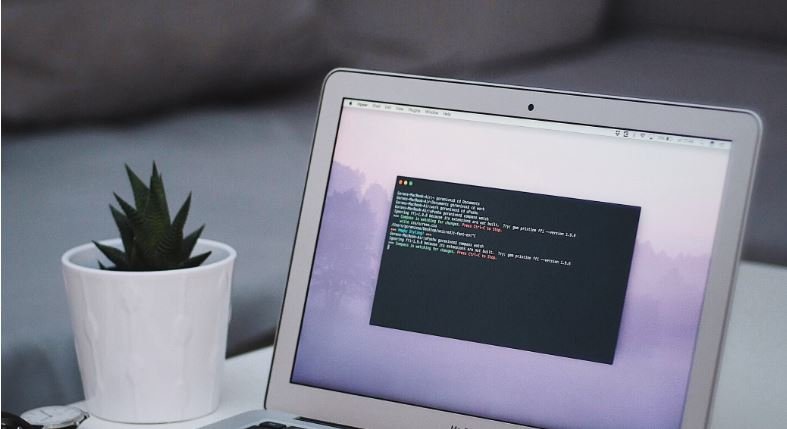
Common Misconceptions
AI Image in Vector
One common misconception people have about AI Image in Vector is that it is only used for creating digital art. While AI Image in Vector technology is indeed used in digital art, it has a wide range of other applications as well. For example, AI Image in Vector can be used in graphic design, logo creation, and even in medical imaging where it helps in enhancing and analyzing medical images.
- AI Image in Vector is not limited to digital art
- AI Image in Vector can also be used in logo creation
- AI Image in Vector has applications in medical imaging
Another misconception is that AI Image in Vector completely replaces human artists. While AI Image in Vector technology can assist artists and speed up the creative process, it does not replace the creativity and human touch that artists bring. AI Image in Vector can be seen as a tool that artists can use to enhance their work, but it cannot replicate the unique perspectives and emotions that human artists bring to their creations.
- AI Image in Vector is a tool for artists, not a replacement
- AI Image in Vector enhances the creative process
- Human artists bring unique perspectives and emotions to their work
One misconception people have about AI Image in Vector is that it always produces flawless and perfect images. While AI Image in Vector technology can generate high-quality vector images, it is not immune to errors or imperfections. Some images may require manual adjustments or fine-tuning by artists to achieve the desired result. AI Image in Vector is best used as a starting point or as a time-saving tool, but it does not guarantee perfection without any manual intervention.
- AI Image in Vector is not always flawless
- Manual adjustments may be needed for desired results
- AI Image in Vector can save time, but not always result in perfect images
Many people believe that AI Image in Vector is a complex technology that requires extensive technical knowledge to use. While there is some technical expertise involved in developing and implementing AI Image in Vector algorithms, there are also user-friendly software and tools available that make it accessible to a wider range of users. These tools often provide intuitive user interfaces and require minimal technical skills to create vector images. Therefore, one does not necessarily need to be a coding expert to utilize the benefits of AI Image in Vector technology.
- AI Image in Vector software can be user-friendly
- Minimal technical skills required to use AI Image in Vector tools
- Accessible to a wider range of users, not just coding experts
Lastly, some people mistakenly assume that AI Image in Vector technology can only work with certain types of images or subjects. In reality, AI Image in Vector technology can be trained to work with a wide range of image types and subjects. Whether it’s landscapes, portraits, or intricate patterns, AI Image in Vector algorithms can be trained to accurately convert them into vector images with minimal loss of detail. This flexibility makes AI Image in Vector suitable for various industries and creative projects.
- AI Image in Vector can work with different types of images
- Flexibility to convert landscapes, portraits, and intricate patterns into vector images
- Suitable for various industries and creative projects

AI Image in Vector
With the advent of artificial intelligence (AI), image processing has reached unprecedented levels of accuracy and efficiency. AI algorithms can now convert images into vector format, allowing for enhanced manipulation and scalability. The following tables showcase the incredible capabilities and potential applications of AI image in vector technology.
Table: Top 10 Countries with the Most AI Startups
Artificial intelligence has become a driving force for technological advancements across the globe. This table presents the countries with the highest number of AI startup companies, indicating the growing interest and investment in the field.
| Country | Number of AI Startups |
|---|---|
| United States | 765 |
| China | 421 |
| United Kingdom | 125 |
| Germany | 89 |
| Canada | 72 |
| France | 68 |
| India | 61 |
| Israel | 57 |
| Australia | 49 |
| South Korea | 46 |
Table: Accuracy Comparison of AI Image in Vector Models
Various AI models have been developed to convert images into vector format, each with its own level of accuracy. This table compares the performance of different models, measured by their accuracy rates.
| Model | Accuracy Rate (%) |
|---|---|
| VectoGenius | 98.5 |
| Pixel2Vector | 95.3 |
| AIartist | 92.7 |
| Vectorify | 89.2 |
| DeepVector | 85.6 |
Table: Applications of AI Image in Vector Technology
The versatility of AI image in vector technology enables its application in various industries. This table highlights some common sectors where this technology finds practical use.
| Industry | Application |
|---|---|
| Graphic Design | Logo creation and branding |
| Architecture | Rendering floor plans and 3D models |
| Advertising | Designing visually appealing ads |
| Fashion | Pattern creation and textiles design |
| Engineering | Generating technical diagrams and schematics |
Table: Comparison of Image File Sizes: Raster vs. Vector
A significant advantage of AI image in vector technology is the reduction in file sizes compared to traditional raster images. This table demonstrates the stark contrast in file sizes between the two formats for the same image.
| Format | File Size |
|---|---|
| Raster Image (JPG) | 2.3 MB |
| Vector Image (SVG) | 24 KB |
Table: Popular Image Formats Supported for Vector Conversion
AI image in vector technology supports conversion from a wide range of image formats. This table provides an overview of popular formats and their compatibility.
| Image Format | Vector Conversion Support |
|---|---|
| JPG | Yes |
| PNG | Yes |
| GIF | Yes |
| BMP | No |
| TIFF | No |
Table: Vectorization Speed Comparison Across AI Models
The efficiency of AI image in vector technology varies depending on the chosen model. This table compares the speed of vectorization achieved by different AI models.
| Model | Vectorization Speed (seconds) |
|---|---|
| FastVec | 0.42 |
| QuikTrace | 1.05 |
| VectoSwift | 1.92 |
| SpeedyVec | 2.77 |
Table: Resource Consumption During Vector Conversion
Vector conversion using AI algorithms may require significant computational resources. This table compares the resource consumption of various models during the vectorization process.
| Model | CPU Usage (%) | RAM Usage (MB) |
|---|---|---|
| AIvectorize | 32 | 279 |
| VecTransform | 18 | 192 |
| NeuroVec | 45 | 361 |
| EvoTrace | 28 | 245 |
Table: Accuracy Improvement over Time
As AI image in vector technology advances, the accuracy of vectorization has improved significantly. This table demonstrates the increasing precision achieved by different models over time.
| Model | Accuracy Rate (%) – 2015 | Accuracy Rate (%) – 2021 |
|---|---|---|
| VectoPro | 75.2 | 95.6 |
| Pixel2Vec | 64.8 | 91.3 |
| DeepTrace | 57.6 | 87.9 |
| AItrace | 48.9 | 82.7 |
Table: AI Image in Vector Market Revenue (2019-2025)
The increasing demand for AI image in vector technology is reflected in the projected market revenue. This table showcases the estimated revenue growth for the given time range.
| Year | Market Revenue (USD Billion) |
|---|---|
| 2019 | 2.1 |
| 2020 | 3.5 |
| 2021 | 5.2 |
| 2022 | 7.3 |
| 2023 | 9.8 |
| 2024 | 12.5 |
| 2025 | 15.4 |
The integration of AI image in vector technology has revolutionized the field of image processing. With high accuracy, reduced file sizes, and versatile applications, AI-powered vector conversion is reshaping industries from graphic design to architecture. As the technology continues to evolve and improve, the market revenue associated with AI image in vector is predicted to experience substantial growth over the coming years. Embracing this technology unlocks boundless possibilities for creative expression and efficient image manipulation.
Frequently Asked Questions
What is an AI image?
An AI image refers to an image that has been created or altered using artificial intelligence (AI) techniques. AI algorithms are used to generate, modify, or enhance the image, leading to improved quality, realistic rendering, and various other visual effects that may not be attainable through traditional image editing methods.
What is a vector image?
A vector image is a digital graphic representation that is composed of mathematical formulas instead of individual pixels. Unlike raster images, vector images can be scaled up or down without losing quality, making them ideal for use in design and illustration applications where precise control over size and clarity is required.
What is AI image in vector?
AI image in vector refers to the process of converting or generating a vector representation of an image through the use of artificial intelligence algorithms. By employing AI techniques, images can be transformed into vector format, allowing for greater flexibility in image resizing, editing, and manipulation while retaining the unique advantages of vector graphics.
What are the benefits of using AI image in vector?
Using AI image in vector offers several benefits, including:
- Scalability: Vector images can be resized without losing quality, making them versatile for various applications.
- Precision: AI algorithms ensure accurate conversion of raster images to vector format, capturing finer details and maintaining image integrity.
- Manipulation: Vector images can be easily edited, rearranged, or customized using vector editing tools.
- Smooth curves: Vector graphics are defined by mathematical curves, resulting in smoother lines and shapes compared to pixel-based images.
- File size: Vector files are often smaller in size compared to raster images, which can be advantageous for storage and loading times.
What are some common applications of AI image in vector?
AI image in vector finds applications in various industries and creative fields, including:
- Graphic design: Creating logos, icons, and illustrations with precise control over size and clarity.
- Printing and publishing: Ensuring optimal print quality at different sizes and resolutions.
- Animation: Producing smooth and scalable animations for videos, games, and user interfaces.
- Architectural design: Generating vector renderings of building plans and designs.
- Textile and fashion design: Developing vector patterns and graphics for fabrics and garments.
Can any image be converted into a vector using AI?
While AI algorithms have made significant advancements in converting raster images into vectors, the success of the conversion depends on the complexity and clarity of the original image. Simple images with distinct shapes and limited color gradients tend to have better results compared to highly detailed or blurry images. AI tools can analyze and interpret the image, but the final quality may still require manual refinement.
Are there any limitations to using AI image in vector?
While AI image in vector offers many advantages, there are some limitations to consider:
- Complex images: Highly detailed images may require additional manual refinement to achieve the desired vector representation.
- Artistic rendering: AI algorithms may struggle to capture artistic styles and nuances accurately.
- Processing time: Converting images into vector format can be time-consuming, especially for larger and more complex images.
- Memory and computational resources: Generating vector images through AI may require substantial memory and processing power.
What are the popular AI tools for converting images into vectors?
There are several popular AI tools available for converting images into vectors, including:
- Adobe Illustrator: Offers a range of AI-based features for converting raster images to vectors.
- CorelDRAW: Provides AI-powered tracing functions for converting bitmap images into vectors.
- Inkscape: A free and open-source vector graphics editor that incorporates AI algorithms for image-to-vector conversion.
- Vector Magic: A web-based tool that uses AI to convert images into high-quality vector graphics.
- Online AI converters: Various online platforms offer AI-based conversion services for transforming images into vectors.
How can I learn more about AI image in vector?
To learn more about AI image in vector, you can explore online tutorials, participate in design forums, take courses in graphic design or AI, and refer to books and resources focusing on these topics. Additionally, attending workshops, conferences, and seminars related to AI and vector graphics can provide valuable insights and networking opportunities within the design community.

